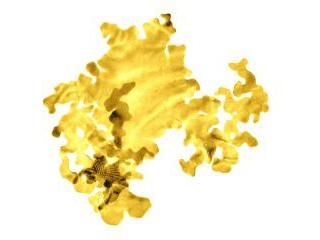Nanopatterns Regulate Electricity
Advertisement
Regular arrangements of sodium atoms make sodium cobalt oxide a perfect material for laptop batteries, an efficient cooling material and a superconductor. The concentration of sodium atoms in the material can vary and the material's behaviour depends sensitively on this number. Scientists from the Hahn Meitner Institute (Berlin), the CEA research centre in Saclay (Paris), and the University of Liverpool have shown that the sodium atoms always arrange in regular patterns, and these patterns determine the properties of the material. The concentration of sodium atoms can easily be varied using chemical methods, and it is possible to change the material from a metal to an insulator, and then to superconductor, just by putting it into an electrochemical cell and changing the applied voltage.
On the microscopic level, sodium cobalt oxide has a characteristic layered structure: cobalt oxide layers alternate with layers of sodium atoms ordered on a nanoscale. The concentration of sodium atoms can vary over a large range, and the detailed arrangement of the sodium atoms determines the electrical properties of the material. When they are far apart from each other, each atom acts as a well confining the electrons constituting the current flow - the material becomes an insulator. If they are arranged in lines, they form wire-like structures allowing current to flow along one direction. Alan Tennant, head of the department Magnetism at the Hahn-Meitner-Institut explains that "the electrons responsible for the current flow behave like waves and they like to arrange their wavelength and their behaviour to fit the predefined structure. In this way the electrons can be controlled by the chemical composition of the material. If the sodium atoms were arranged at random, small changes in their number would hardly influence the current flow."
Sodium cobalt oxide is also a good candidate for an efficient cooling material, since it is among the few materials that are good electrical conductors, but that conduct heat badly. The sodium atoms are confined in cages. They can rattle in these cages, taking up most of the heat trying to travel through the material without impeding the flow of electric current. New thermoelectric materials could provide a route to more energy efficient refrigeration, as well as converting heat sources such as geothermal energy and hot water from conventional power stations into useful electricity.
A kaleidoscope of patterns of sodium atoms depending on the sodium concentration was found. In order to understand how the sodium structures come about, one can imagine the various atoms as marbles. The oxygen atoms are arranged in a honeycomb pattern and the sodium atoms have to rest in the cavities formed between them. Due to their large size, two sodium atoms cannot occupy two adjacent cavities and, therefore, when the sodium layer is completely filled, only every second cavity is occupied. This creates two classes of sodium atoms. Finally, the sodium atoms repel each other and, therefore, try to keep as far apart as possible. The overall pattern reflects the best arrangement in accordance with these factors for a given concentration.
Original publication: M. Roger, D.J.P. Morris, D.A. Tennant, M.J. Gutmann, J.P. Goff, J.-U. Hoffmann, R. Feyerherm, E. Dudzik, D. Prabhakaran, N. Shannon, B. Lake, P.P. Deen; "Patterning of Sodium Ions and the Control of Electrons in Sodium Cobaltate"; Nature 2007.
Other news from the department science
Most read news
More news from our other portals
See the theme worlds for related content
Topic World Battery Technology
The topic world Battery Technology combines relevant knowledge in a unique way. Here you will find everything about suppliers and their products, webinars, white papers, catalogs and brochures.

Topic World Battery Technology
The topic world Battery Technology combines relevant knowledge in a unique way. Here you will find everything about suppliers and their products, webinars, white papers, catalogs and brochures.


































































